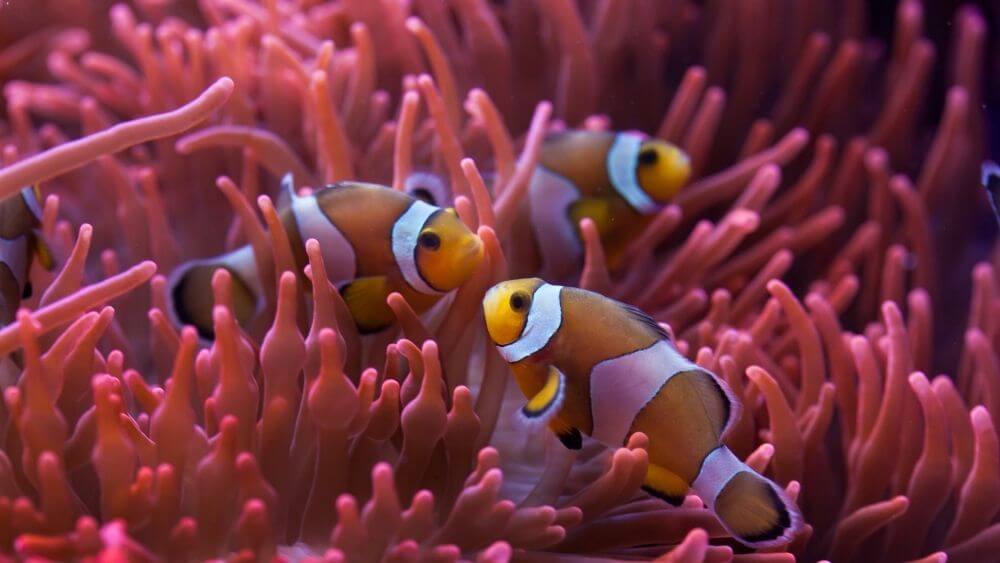Why don’t clownfish get stung by sea anemones?

Contents
Sea Anemone:
- Sea anemone are marine predating animals named after the species of flower plant anemone.
- They are named after the flower due to their colorful and similar appearance of flowers.
- Sea anemone belongs to the phylum Cnidaria and class Anthozoa.
- A sea anemone is a single poly attached on the hard surface such as rock.
- The polyp consist of a columnar trunk with oral disc on top of it and a ring of tentacles and a central mouth.
- The tentacles can be retracted or expanded as required for multiple purpose such as catching the prey.
- Tentacles are lined with stinging cells known as cnidocytes.
- These stinging cells are filled of venoms, once injected into the prey, it can make it paralyze the prey and move it to the center of its mouth.
Clownfish:
- Clownfish are also known as anemone fish.
- They belong to the phylum Chordata and class Actinopterygii.
- The anemone fish can be found in yellow, orange, reddish or blackish color with white bands or white patches in between them depending on its species.
- The largest anemone fish can reach up to the length of 17 cm while the shortest can go up to 8 cm approx.
- Clownfish are found to be omnivorous in nature.
Why don’t Clownfish get stung by Anemone?
- Anemone fish and sea Anemone share a mutual and symbiotic relation between themselves with both taking benefits from one another.
- The sea anemone helps the clownfish to stay safe from predators also it allows the clownfish to feed on the remaining dead of the prey of anemone and some dead tentacles of sea anemone.
- In return, clownfish helps the sea anemone by protecting it from its predators.
- Irrespective of their relation, clownfish are immune to the stings by anemone.
- The reason can be said the thick mucous coating around the clownfish which helps them to be safe from sea anemone.
- The mucous coat around the clownfish is said to be thick enough to save it from the tentacles of sea anemone.
Fun Facts:
- It is estimated that there are more than 1000 species of sea anemone found across the world.
- There are about 30 species known until now for clownfish.
- All clownfish are born male.
Related Questions:
- How do sea anemone and clownfish co-habitat?
- Who are the predators of clownfish?
- Who are the predators of sea anemone?
True or False:
- Sea anemone are named after the flower.
- Clownfish does not get sting by sea anemone.
- Clownfish belongs to the phylum Chordata.
- Sea anemone belongs to the phylum Animalia.
- Sea anemone has two tentacles only.
Objective Quiz:
- Sea anemone consist of a _______.
- Single polyp.
- Multiple polyp.
- Two polys.
- None of the above.
- Sea anemone belongs to the _______.
- Phylum Cnidaria.
- Phylum Chordata.
- Phylum Annelida.
- None of the above.
- The tentacles of anemone can be __________.
- Expanded.
- Retracted
- Both 1) and 2).
- None of the above.
- Clownfish are ________ in nature.
- Carnivore.
- Herbivore.
- Omnivore.1
- None of the above.
- Clownfish does not get sting by sea anemone due to ________.
- Thick mucosal coat around it.
- Sea anemone cannot sting it.
- Both 1) and 2).
- None of the above.






Responses